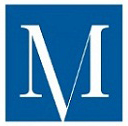This is an update to our previous blog post published two years ago.
In the last few years, one of the biggest trends among communications and marketing professionals has been to predict the pace of rapid growth in college and university marketing. University Business published an article many years ago highlighting the importance for college marketers to measure the success of their future marketing campaigns. Certainly, college marketers have taken heed of that advice. In recent years, The Melior Group has seen higher education market research become one of the fastest growing segments of our business.
What’s the Challenge?
While many of the core tenants of higher education marketing remain intact, universities are tasked with meeting today’s challenges; demographic trends, budget shortfalls, and student financial aid cutbacks have resulted in enrollment declines. It is predicted that these trends will continue.
So What’s A College to Do?
Successful higher education marketers are learning how to step up their marketing initiatives, recognizing that competition for students is on the rise. We’re encountering many more universities looking to refresh their brand identity and get a better handle on the strengths that will attract students to their institutions.
With universities looking for information to support their strategic marketing initiatives, perhaps it’s time to take another look at common practices to measure success of marketing initiatives.
Sometimes THE Standard Isn’t the Only Standard
Traditionally, top-of-mind awareness has been considered THE standard measure of understanding where various colleges rank in the minds of prospective students and parents.
We have learned that traditional measures don’t sufficiently tell the whole story… and it barely amounts to a chapter. There’s so much more to evaluating perceptions of prospective students… such as also including key stakeholders and influencers on college selection. To successfully influence prospects, key community and business leaders, prospective employers of its graduates, we suggest that other measures be included in any evaluation, such as
- Likelihood to visit
- Interest in applying
- Likelihood to recommend
- Quality of graduates (ready for the workforce)
- Web/social media activities (both the positive and negative)
- Alumni giving/engagement
- Engagement with the community
Successful universities actively look for creative, outside of the box solutions for designing academic programs to appeal to students, demographic outreach and financial options that will bolster their value to more prospective student families and increase enrollment.
Smart marketers are stepping up their marketing strategies by looking at the information that truly matters and are beginning to understand the mix of factors that are important to the specific prospect populations who value what they offer.
For over 30 years, The Melior Group has been supplying in-depth information and working with university clients to help them to think strategically about their marketing efforts. To learn more about our work with colleges and universities, visit our Education page or please contact Elizabeth Foley at [email protected] / 215-545-0054 x111 or Linda McAleer at [email protected] / 215-545-0054 x104.



